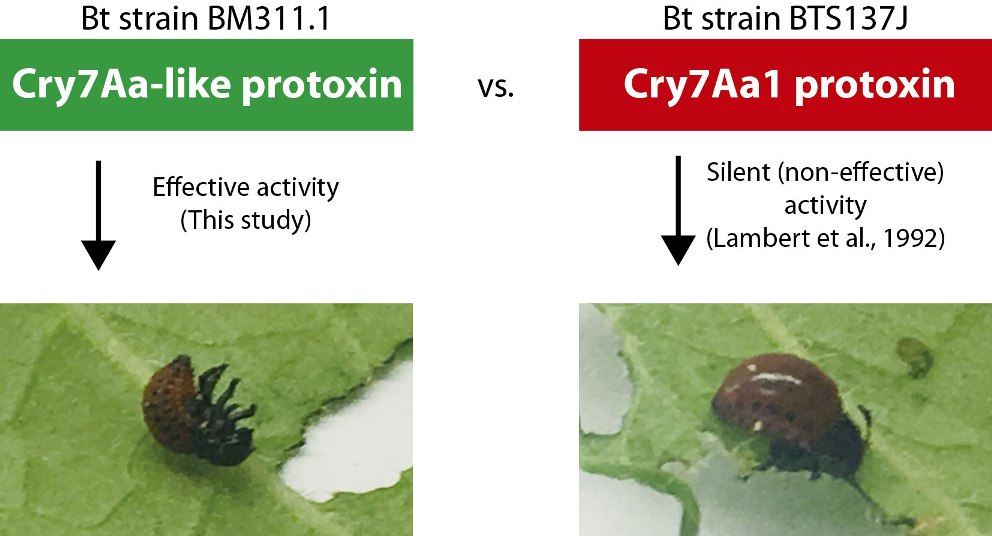Preprint
Article
A Strain of Bacillus thuringiensis Containing a Novel cry7Aa2 Gene That Is Highly Toxic to Leptinotarsa decemlineata (Say) (Coleoptera; Chrysomelidae)
Altmetrics
Downloads
359
Views
352
Comments
0
A peer-reviewed article of this preprint also exists.
supplementary.pdf (628.06KB )
This version is not peer-reviewed
Submitted:
18 May 2019
Posted:
20 May 2019
You are already at the latest version
Alerts
Abstract
The genome of the Bacillus thuringiensis BM311.1 strain was sequenced and assembled in 359 contigs containing a total of 6,390,221 bp. The plasmidic ORF of a putative cry gene from this strain was identified as a potential novel Cry protein of 1138 amino acid residues with a 98% identity respect to Cry7Aa1 protein and a predicted molecular mass of 129.4 kDa. The primary structure of this Cry7Aa2 protein, which revealed the presence of eight conserved blocks and the classical structure of three domains, differed in 28 amino acid residues from that of Cry7Aa1. The cry7Aa2 gene was amplified by PCR and then expressed in the acrystalliferous strain BMB171. SDS-PAGE analysis confirmed the predicted molecular mass for the Cry7Aa2 protein and revealed that, after in vitro trypsin incubation, it was degraded to a toxin of 62 kDa. However, when treated with digestive fluids from Leptinotarsa decemlineata larvae two proteinase-resistant fragments of 60 and 65 kDa were produced. Spore and crystal mixture produced by the wild-type BM311.1 strain against L. decemlineata neonate larvae resulted in a LC50 (18.8 μg/ml), which was statistically equal to the estimated LC50 (20.8 μg/mL) for the recombinant BMB17-Cry7Aa2 strain. In addition, when this novel toxin was activated in vitro with commercial trypsin, the LC50 value was reduced 4 times approximately (LC50 = 4.9 μg/mL). The advantages of Cry7Aa2 protoxin compared to Cry7Aa1 protoxin when used in the control of insect pests are discussed.

Keywords:
Subject: Biology and Life Sciences - Biology and Biotechnology
Copyright: This open access article is published under a Creative Commons CC BY 4.0 license, which permit the free download, distribution, and reuse, provided that the author and preprint are cited in any reuse.
MDPI Initiatives
Important Links
© 2024 MDPI (Basel, Switzerland) unless otherwise stated







